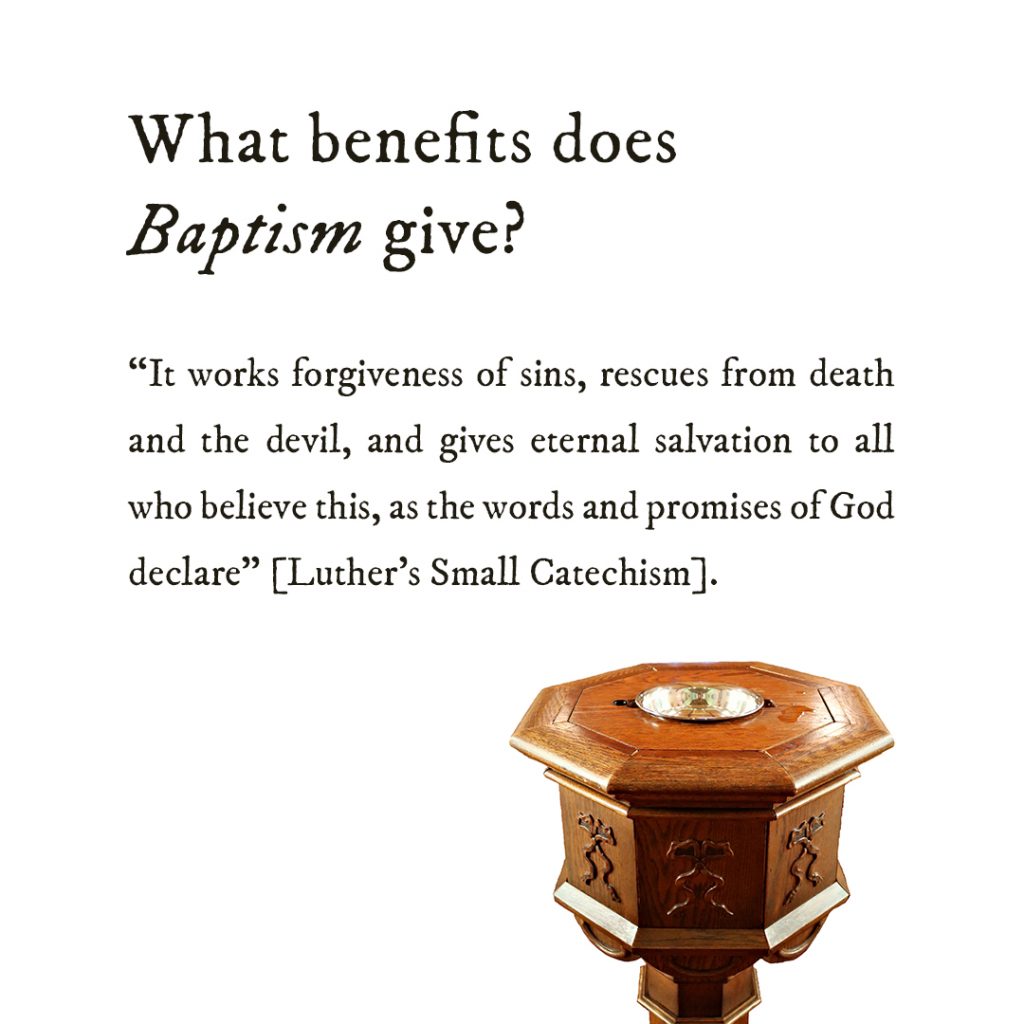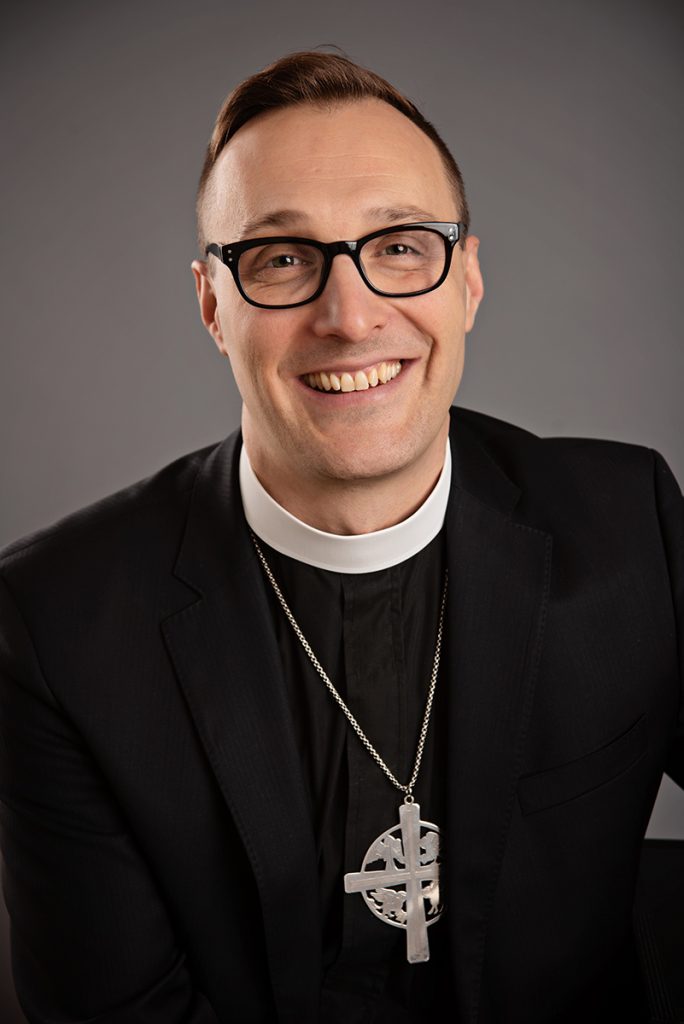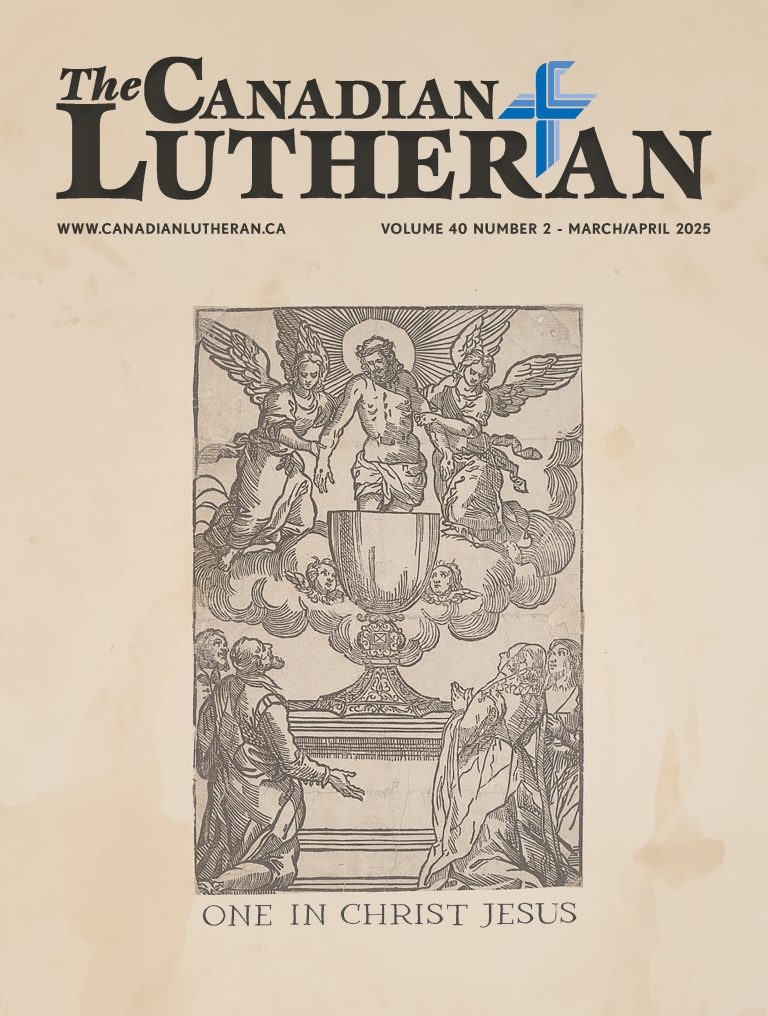Water and the Word
 by David Haberstock
by David Haberstock
This summer I was honoured to serve as the chaplain for the 2022 National Youth Gathering under the theme “In Not Of,” based on Philippians 3:20: “But our citizenship is in heaven, and from it we await a Saviour, the Lord Jesus Christ.”
We live in this world, but, as baptized children of God, our citizenship is in heaven. Thus, at the gathering, in our daily services of Compline and the Service of Prayer and Preaching from the Lutheran Service Book, we focused on the four Small Catechism questions about baptism and Bible narratives connected to baptism. Almost any time a story in Scripture makes use of water, there is often some intentional imagery of baptism that our Lord has arranged in the details of that event.
For instance, in connection to the question, “What is baptism?” and its answer that “baptism is not just plain water, but it is the water included in God’s command and combined with God’s Word,” we looked at Creation (Genesis 1) and Elijah healing Naaman in the waters of the Jordan (2 Kings 5:1-16).
At Creation, the Triune God—the Father creating, the Word of God speaking all things into existence, and the Holy Spirit hovering over the un-formed and un-filled waters—creates and orders all things out of the waters. It is the Word of God, Jesus (John 1:1-14), in and with the water, that brought forth a new and blessed world, just as from the waters of baptism we are brought forth as new creations.
Moreover, Naaman was healed and cleansed by the waters of the Jordan River, not on account of the holiness of that water, but on account of the mighty word that God’s prophet spoke: “Wash, and be clean” (2 Kings 5:13b).
In answer to the question, “What benefits does baptism give?” the catechism says, “It works forgiveness of sins, rescues from death and the devil, and gives eternal salvation to all who believe this as the words and promises of God declare.”
In the Flood (Genesis 7:17-8:19), eight souls were saved through water, which is an image, or type, of baptism (1 Peter 3:20-21), and a new, cleansed world was brought forth.
As a parallel of this, Moses was placed in a pitch-covered basket or box (the same Hebrew word is used of Moses’ “basket” as Noah’s “ark”), and was saved from death by being drawn out of the water (Exodus 2:1-10). Not only was he saved, but the whole people of God were saved by him, through water, from their slavery.
The Catechism asks, “How can water do such great things?” The answer: “Certainly not just water, but the Word of God in and with the water does these things, along with the faith which trusts this Word of God in the water. For without God’s Word the water is plain water, and no Baptism. But with the Word of God it is a Baptism, that is, a life-giving water, rich in grace, and a washing of the new birth in the Holy Spirit.”
In our Lord’s baptism (Matthew 3:13-17), it is not the water, but our Lord who fulfills all righteousness—our righteousness—by exchanging our sin and its stain with His complete righteousness which clothes us (Galatians 3:27). Moses healed the bitter waters of Marah (Exodus 15:22-25) by throwing a log in on the third day. That wood in the water points to Christ’s cross, whose Word of salvation in and with the water granted and sustained life for the children of Israel.
Finally, following the question, “What does such baptizing with water indicate?” the Catechism explains: “It indicates that the Old Adam in us should by daily contrition and repentance be drowned and die with all sins and evil desires, and that a new man should daily emerge and arise to live before God in righteousness and purity forever.”
This is demonstrated by the crossing of the Red Sea (Exodus 14:12, 9-31), where on one side of the waters the children of Israel were slaves, and on the other side of the waters they were free, having been baptized into the cloud and the sea (1 Corinthians 10:1-2).
 It is also seen in the “resurrection” and repentance of Jonah who, fleeing from God and His calling to preach, is pursued by the wind (or Spirit) of God on the sea until he is finally thrown into the sea where he spends three days in the place of the dead. And then, having repented, he is spat up by death, and proclaims to the Ninevites their doom. As a result, 120,000 souls were saved from the destruction wrought by their sin.
It is also seen in the “resurrection” and repentance of Jonah who, fleeing from God and His calling to preach, is pursued by the wind (or Spirit) of God on the sea until he is finally thrown into the sea where he spends three days in the place of the dead. And then, having repented, he is spat up by death, and proclaims to the Ninevites their doom. As a result, 120,000 souls were saved from the destruction wrought by their sin.
This new life from the dead is what baptizing with water indicates. Baptism is an image and pattern through which all of Scripture, and the world itself, can be understood—for by it, though we are in this world, we are not of this world.
———————
Rev. David Haberstock is Lutheran Church–Canada (LCC)’s Central Regional Pastor.




